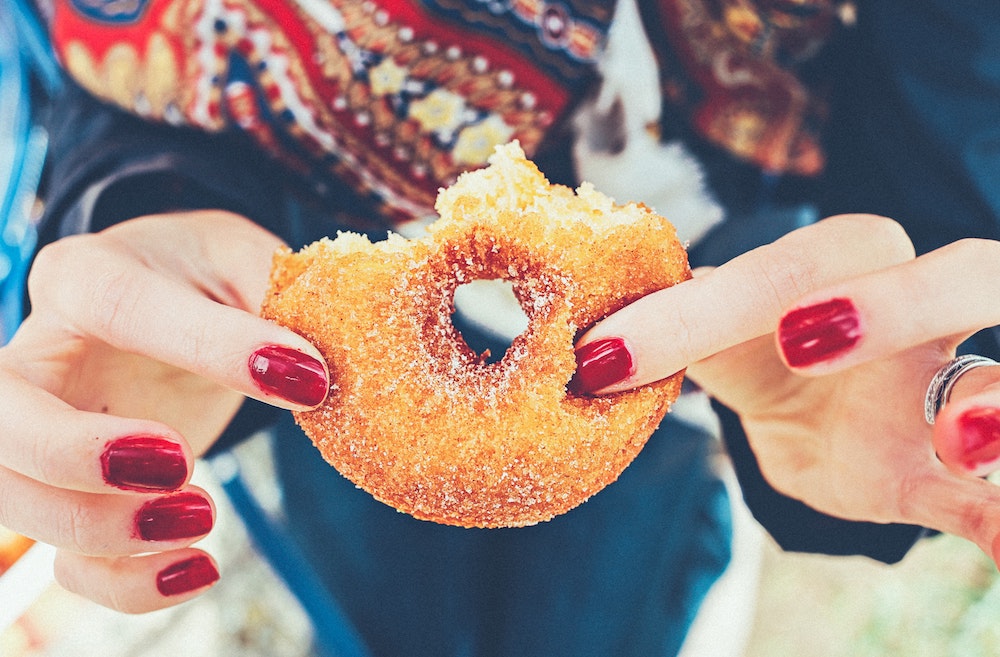A little ice cream won’t hurt…
A cold beer would sure be refreshing…
Just a few more minutes on social media before I get to bed…
Sound familiar? Maybe you’ve told yourself one of these in the past, when you had a desire for just a little bit more something to take the edge off and help you feel better.
We all get cravings sometimes, that’s just part of being human. Those of us in recovery know from experience that we need to be proactive about staying ahead of the urges that can take us right back to our addictions, whether they are to substances or behaviours. When we’re not skillful in how we respond to them, cravings can overwhelm us, take us away from our values, and lead us toward addiction again. And it turns out there are some simple action steps we can take to keep those cravings from winning.
But first, what is a craving, exactly?
The Definition of a Craving
A dictionary definition is:
The desire for more of a substance or activity (for example, drug of abuse, sex) consisting of a desire to experience the euphoric (or other) effects, as well as the desire to avoid the withdrawal aspects of abstinence.
In plain terms, it means this:
I need it.
I cannot function without it.
I have to find it/get it/do it.
And the things we crave are overwhelmingly the types of indulgences that have direct effects on our bodies and brains to change how we feel. Sugar, sex, alcohol, drugs, gambling, shopping—all of these can trigger complex neurological changes in us that make it hard to resist their lure.
Why We Have Cravings
There is nothing wrong with us, just because we have cravings. We are born with a preference for sweet foods. From our first taste of mother’s milk as babies, comfortingly nestled into a warm embrace as we sip… At least, that’s the ideal. In the far past, getting our hands on high calorie, high fat, high sugar foods (like honey or fatty meat) served as a bit of insurance against the risk of starvation and death. But most of us are not at risk of starvation these days. Instead, we’re surrounded by an abundance of foods, even at places like the checkout counter at a hardware store. But our natural systems have not evolved to match the current environment.
Wanting enjoyable treats is hardwired into us, with the evolutionarily ancient hypothalamus in our brains sending up a primitive urge to the newer prefrontal cortex. This control centre of the brain is now tasked with making it happen: finding and getting that tasty reward!
The Biology of Cravings
It can help us beat our cravings when we understand that there are biological reasons for them. Science shows that the brain pathways of drug, alcohol, and sugar addiction are similar. All of these substances potentially trigger the same reward and pleasure signals. Craving, tolerance, and withdrawal have all been shown to happen with sugar as well as what we more commonly think of as “drugs of addiction.”
Biochemical changes occur when hooked on those kinds of substances. The hormonal system gets hijacked. For instance, low levels of serotonin, a hormone related to feeling calm, are common in addiction and early abstinence. Those low levels can drive urges for sugar, as well as contribute to depression. Increased appetite, craving for high calorie or sweet foods, and mistaking actual physical hunger as cravings for the drug of choice are all too frequent when our hormones are not well balanced due to addiction or early detoxification.
Cravings in Recovery
It’s natural to have strong cravings, especially early in recovery. Cravings may also switch from one addictive behaviour to another, in a pattern known as “cross addiction” or transfer addiction. A history of dependence on sugar, drugs, or alcohol can increase the risk of becoming addicted to any of the others. Becoming abstinent from a previous addiction can be an extremely high-risk time for this kind of cross-addiction to happen. For instance, when they give up the booze, many people find themselves suddenly reaching for more sugar than they ever ate in the past. The natural sugars that used to come from alcohol are now being sought from cookies. This maintains those neural circuits of sugar addiction.
The Genetics of Addictive Patterns
Cravings for substances or behaviours that create a sense of artificial pleasure is completely natural. It’s just that some of us are at higher risk for taking any of those behaviours too far. The genetics of addictive patterns in families have been well studied, and the links run deep. For example:
Specific genes have been linked to higher sweet preference in alcohol and drug dependent people.
Alcohol or drug dependent people have been shown to have a higher preference for sweet tastes even before they first try their eventual substance of choice.
The biological children of alcohol-dependent fathers show higher preference for sweets.
Common genes have been identified for alcohol dependence, binge eating disorders, and increased risk of obesity.
A researcher named Jeffrey Fortuna published a paper titled Sweet Preference, Sugar Addiction and the Familial History of Alcohol Dependence: Shared Neural Pathways and Genes that outlines these connections in more detail, if you want to dive in more deeply.
Gut Health and Cravings
Even our gut bugs can increase the strength of our cravings! Addicts and alcoholics may be uniquely at risk from having poor gut health. This is due to the combination of consuming toxic substances and possibly not consuming adequate healthful foods. Poor consumption behaviors can create an imbalance in the kinds of bacteria, yeasts, and other microorganisms living in the gut. When we have too large a population of gut bugs that thrive on sugar, for example, they can drive cravings for more of the food they want. We can feel these cravings even if our own better sense tells us to lay off the cake that’s always offered at our homegroup! The microbiota does this by sending signals up the vagus nerve, which connects the stomach and the brain.
When we take care of our gut health, we can help reduce the risk of sugar or alcohol cravings that could otherwise become full-blown addictions. One recent scientific paper put it like this, “Microbiota changes might also alter brain function, and the gut–brain axis might be a potential target to reduce alcoholic relapse risk.”
Taming the Cravings and Supporting our Recovery
So, what can we do to tame the cravings and support our recovery? Nutrition is a good place to start, as it can directly reduce cravings, reduce the risk of sugar addiction, and promote gut health. Mindset and lifestyle practices such as mindfulness, sleep, and exercise have a direct role to play as well. Some steps to consider:
Focus on gut health.
Add probiotic foods like plain yoghurt and sauerkraut or kimchi to your daily rotation. Include plenty of prebiotic foods as well, such as beans and whole grains. These are high-fibre foods that our healthy, beneficial gut bugs thrive on!
Get enough protein early in the day.
This will help balance hormones and reduce cravings for the entire day! High-protein foods such as beans, seafood, tofu, or chicken keep hunger at bay and provide nutrients that are often missing when we’ve been living on a “liquid diet” of alcohol, such as iron, folate, thiamine, and magnesium.
Choose “slow carbs.”
High-fibre, whole foods and grains help balance blood sugar. This, in turn, helps reduce the shakiness and edginess that we can mistake for an urge to drink or use. These kinds of food also help your body produce serotonin – that’s the “happy hormone” we mentioned earlier!
Enjoy plant-based fats.
Avocado, nuts and seeds, and olives can help reduce inflammation, and the risk of depression. Choosing omega-3 fats, like walnuts and flaxseeds, is a double win, as this type of fat is a component of brain cell membranes. Getting enough of it in the diet links to reduced depression and anxiety.
Practice mindfulness.
Learning to be aware of the sensations and thoughts that are usually simmering below the surface gives us more power of choice. Being mindful helps us choose whether or not we fall into our same old habits when cravings do arise. Mindfulness is one of the most effective treatments for binge eating disorder, and it’s been extensively studied for its power to support abstinence from drugs and alcohol as part of a technique known as “urge surfing”. For a user-friendly (and delicious!) place to start, consider trying these tips for mindful eating.
Move your body in ways you enjoy.
Getting at least 30 minutes of physical activity a day does wonders for reducing cravings, reducing risk of depression, gut health, energy….the benefits are almost endless. If 30 minutes seems intimidating, start with 5 minutes! Anything is better than nothing, and you’ll find your strength and fitness increase quickly when you are consistent. It bears repeating, though – make sure it’s a type of movement you enjoy. Breezy bike rides, dancing to Top 40s with the kids or grandkids in the living room, and gardening all count!
Get enough sleep.
Most adults need at least 7 hours of shut-eye in order to reap the benefits of decreased stress, improved metabolism, and reduced cravings for sugar. It also helps rebalance hormones. Lack of sleep raises levels of ghrelin (a hormone that increases appetite) and decreases levels of leptin (a hormone that helps signal your body that you’ve had enough to eat).
Take a kind perspective.
Urges to reach for substances and behaviours of addiction can feel intensely uncomfortable. It can feel almost impossible to resist when the urges are strong. It’s not your fault you have cravings sometimes, and it is your choice how you handle them. Having the intention to treat yourself with care and compassion when it feels overwhelming can help take some of the power out of the urges, so please be kind to yourself!
Using the Body and the Mind to Reduce Cravings
Cravings for food, drugs, and alcohol are natural, and a sign that your brain is working the way it was designed to. That does not mean you need to give in to them, though! By understanding how cravings work, you have more choices about how to tame them. You can use your body and brain to empower your when you support yourself with the nutrition, mindset, and lifestyle practices that reduce cravings.
Get Support in Reducing Cravings
If you’re struggling to take action on these steps, it may be time to call in support. Finding allies in your recovery rooms can be as easy as mentioning in a share that you’re trying to make healthier choices to reduce your cravings. This can open the door to some great conversations after the meeting, as others share their strategies for success. You might also consider working with a counsellor or health coach to provide expertise, accountability, and encouragement. People who enlist the help of a qualified professional are more than twice as likely to meet their goals. It can be a very worthwhile investment in feeling happy, healthy, and high-energy in your recovery!






 What Lyrics Touched You Most During Your Recovery Journey?
What Lyrics Touched You Most During Your Recovery Journey?
